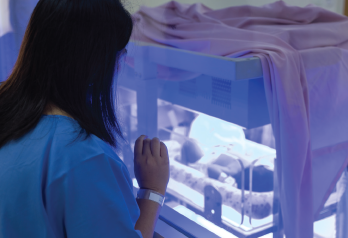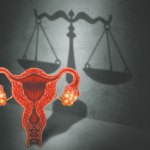
CHAINFOTO24 / shutterstock.com
CHICAGO—Neonatal lupus is a rare disorder, but its onset can be dramatic, and it can be fatal. Clinicians must be armed with information to manage it and help guide parents through difficult decisions, an expert said in April at the State-of-the-Art Clinical Symposium.
Despite the name, neonatal lupus does not mean that either the mother or the unborn child has systemic lupus erythematosus, said Jill Buyon, MD, professor of rheumatology at New York University Langone School of Medicine. In this disease, anti-Ro or anti-La antibodies, and sometimes both, cross the placenta at about 11 weeks of gestation by way of the neonatal FC receptor (FcRn), resulting in congenital heart block (CHB) or a neonatal rash in 2% of fetuses when the mother has not previously had an affected child.
A slow fetal heartbeat, especially between 18 and 26 weeks of gestation, is a warning sign, Dr. Buyon said.
“The finding of a low heartbeat in a fetus, even in a totally healthy mother, should always prompt testing for anti-Ro antibodies,” she said.
The Rash
The risk of skin rash in neonatal lupus is about 7–16%. The rash can be detected at birth, but it is usually detected a few weeks after birth upon exposure to ultraviolet light. Children with neonatal lupus should be protected from the sun. The rash, which resembles subacute cutaneous lupus, lasts about 17 weeks, and only rarely results in scarring.1
The disease can become devastating in a hurry. A fetus can go from having a normal sinus rhythm to complete & irreversible heart block & death in seven or fewer days, Dr. Buyon said.
Congenital Heart Block
The bigger concern with neonatal lupus is CHB. When isolated CHB is found at 18–26 weeks of gestation, more than 85% of mothers will have anti-Ro antibodies. When a mother has anti-Ro antibodies, with no prior children affected by CHB or rash, a 2% chance exists that the fetus will have CHB, Dr. Buyon said. The recurrence rate of CHB is 18%. The mother’s heart is not affected, she said.
The disease can become devastating in a hurry. A fetus can go from having a normal sinus rhythm to complete and irreversible heart block and death in seven or fewer days, Dr. Buyon said.
Research on the disease is a challenge because it’s rare and because of the complex interplay of genetics and environment—the presence of antibodies is just part of the picture. But a proposed model is that the antibodies interrupt the normal remodeling process of the heart, setting off an inflammatory process that leads to fibrosis.

